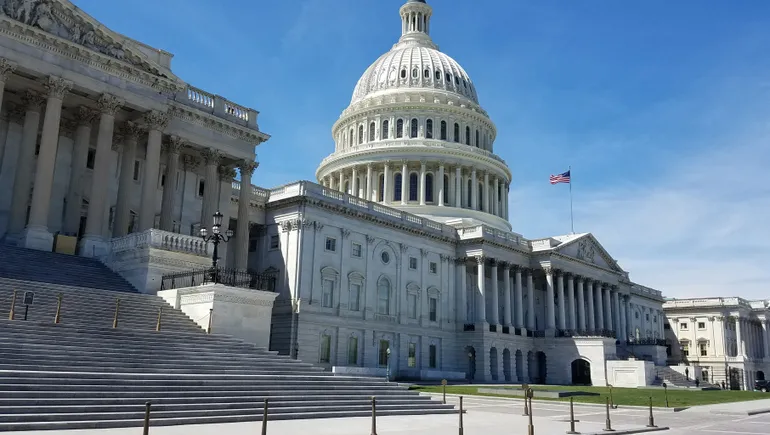The Food and Drug Administration’s plan to expand oversight of laboratory-developed tests threatens to prevent or delay patient access to innovative diagnostics, industry groups warned in congressional testimony Thursday.
The FDA’s final rule on LDT regulation, which could come as soon as April, has unleashed a fierce debate over how to protect the health and safety of patients by ensuring tests developed in a single laboratory are accurate and reliable but still reach the market quickly. The agency received nearly 7,000 comments on the proposed rule, which would broaden its authority to regulate the tests.
“Laboratory-developed tests really are the cutting edge when it comes to leading the foundational work for personalized medicine,” Susan Van Meter, president of the American Clinical Laboratory Association, told a House Energy and Commerce health subcommittee hearing. The Clinical Laboratory Improvement Amendments program certifies LDTs under the current regulatory framework.
The FDA contends the risks associated with the increasingly complex tests have grown since the agency first adopted an enforcement discretion approach to regulating them decades ago, while many tests made by labs today are functionally the same as those made by other manufacturers.
“The testing industry has come to view FDA’s general enforcement discretion approach as an alternative pathway to market for test systems,” the agency stated in the proposed rule. Expanding oversight of LDTs is a top priority at the FDA.
Van Meter said the rule would undermine the ability of labs to offer innovative tests, not because of unreliable results, but because the cost of seeking approval from the FDA can be prohibitively expensive. Under the new rule, the vast majority of LDTs would be regulated as medical devices, meaning they would be subject to pre-market review similar to other in vitro diagnostics.
“We are acutely aware that patients will lose access to essential testing services, especially those that serve pediatric patients, small patient populations and patients with rare diseases — diseases where revenue is modest,” Van Meter testified.
The agency also could face a bottleneck of submissions, Van Meter said, because the rule lacks an exemption for legacy tests. The FDA projects that about 80,000 LDTs currently on the market and nearly 8,000 new LDTs introduced each year would be affected by the rule. Both estimates are part of a wider range.
Donald Karcher, president of the College of American Pathologists, said most LDTs are used for patients who are cared for in the hospital or network where the lab is located, and their clinical validity is well documented. The FDA’s proposed rule would reduce the number of LDTs available to patients and delay medical innovation and timely patient care. The agency should focus primarily on tests that pose the highest risk to patients, Karcher said.
However, Jeff Allen, CEO of Friends of Cancer Research, said the rigor of test validation and review can vary significantly, affecting the reliability of results across different platforms, and argued the regulatory approach should be realigned.
“Without centralized FDA oversight, it’s not known how many tests are even being offered, let alone how they may perform. This is not the reliable path to precision medicine,” said the patient advocacy group executive.
Diagnostic test results are used to help guide more than 70% of all treatment decisions, according to the Centers for Disease Control and Prevention.
“The reality is some patients may be making major medical decisions based on potentially discrepant test results,” Allen told the panel.
Zach Rothstein, executive director of AdvamedDx, told the lawmakers that while the FDA has long ensured the safety and effectiveness of in vitro diagnostics under existing law, the trade group supports comprehensive legislative reform to modernize the device framework so that it is tailored to provide risk-based oversight for all IVDs, including test kits, LDTs and the instruments on which they run.
“We should have the confidence that whatever test we use, wherever it is made, has met the same standard and is subject to the same oversight as any other test,” said Rothstein. High-stakes tests such as for cancer diagnosis should involve a pre-market review of analytical and clinical validity, and all tests should have appropriate controls and post-market monitoring.
Allen, of Friends of Cancer Research, noted the FDA moved forward with the public process of rulemaking in the absence of congressional action to clarify uniform policies for diagnostic tests. “Nothing precludes Congress from continuing to work on a legislative approach as FDA continues working on its proposed rule,” Allen said.
The House Energy and Commerce health subcommittee previously considered legislation known as the VALID Act that would establish a specific framework for regulating diagnostic tests, similar to how drugs are approved and monitored for safety or quality issues. The VALID Act proposes creating a mechanism for the FDA to set regulatory requirements based on the level of risk and benefit to patients, with exemptions for lower-risk and low-volume tests.
The bill also would establish a new pathway for test developers to receive a laboratory or company-based certification for some tests and includes provisions to provide public information on the types of tests available, labeling, post-market monitoring and quality requirements.
Rep. Anna Eshoo, D-Calif., said the FDA’s 510(k) process is not tailored for LDTs, and better processes are needed to validate whether the tests that patients rely on are effective. The lawmaker said Congress has been grappling with the VALID Act for six years, and the legislation has solid support.
“The lack of action by Congress really forced FDA’s hand to come up with their proposal,” Eshoo told the hearing. “It’s up to Congress to act.”

